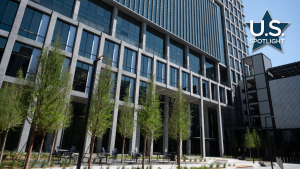Husky Energy is moving forward with the construction of two new heavy oil thermal projects near Lloydminster, Saskatchewan, which is part of a strategy plan to increase production and transform the business.
“Steady performance from our existing thermal facilities and these two new plants, along with projects currently under construction at Sandall and Rush Lake, will add another 33,500 bbls/day of new production over the next three years, more than offsetting declines in non-thermal production,” said Asim Ghosh, CEO of Husky Energy.
The company recently announced that construction will begin this year on the Edam East steam assisted gravity drainage (SAGD) thermal project.
It will be about 7 kilometres south of Edam.
The company is also developing the Vawn SAGD thermal oil recovery project about 1.5 km east of Vawn.
Engineering work is already underway on both projects, which will each produce 10,000 barrels per day and are located in the Rural Municipality of Turtle River.
Both projects involve the construction of the following primary components:
Central processing facility;
Raw water supply pipeline;
Eight salt water disposal wells on one pad site and associated pipeline;
Sales oil pipeline;
Condensate pipeline;
Two SAGD well pair pad sites with eight well pairs (16 wells) per pad (Vawn);
Two Edam East SAGD well pair pad sites with seven well pairs per pad (Edam East);
Observation/control wells (Edam East);
Above ground utility corridors for flowlines connecting the SAGD well pads to the CPF (Vawn).
The minister of the environment determined late last year that both projects didn’t require an environmental assessment, but must follow specific terms and conditions.
For example, impacts to wildlife due to construction of Edam East are expected to be relatively minimal due to the proposed fall and winter timing of construction.
The project location was selected to reduce or avoid construction on native vegetation and other sensitive areas.
The central processing facility, control wells, salt water disposal wells and SAGD pads will be primarily on previously disturbed land.
Wetlands and watercourse along the raw water supply pipeline and sales oil pipeline were avoided to the extent possible during planning of the route to prevent impacts on these areas.
In addition, Husky has committed to using low-impact construction techniques, such as directional drilling, wherever possible to prevent impacts to wetlands and watercourses, which cannot be avoided.
The Vawn project is located predominantly on cultivated private land, which is poor quality habitat for rare or endangered species.
Impacts of the above ground pipeline corridors on wildlife movement are expected to be minimal due to their location on cultivated land and the relatively short distance between the two SAGD well pads and the central processing facility.
Husky has committed to adhere to species-specific setback distances if construction is required during temporal restriction periods.
A mitigation plan will be submitted to the Environmental Assessment Branch prior to construction if any native habitat or environmentally sensitive areas will be impacted following finalization of the route for the underground raw water supply pipeline, condensate pipeline, sales oil pipeline or the above ground flowlines.
A Heritage Resource Impact Assessment will be submitted to the Heritage Conservation Branch prior to construction on all heritage sensitive areas.
Husky’s growing focus on thermal projects is guided by a proven template of smaller SAGD plants in the Lloydminster region that are gaining access to longer life heavy oil deposits.
The two new plants will be nearly identical to the Pikes Peak South and Rush Lake projects.
Husky set a target of achieving 55,000 bbls/day of production from thermal projects by 2016. Construction is advancing at the 10,000 bbls/day Rush Lake project, with first oil expected in the second half of 2015.










Recent Comments
comments for this post are closed